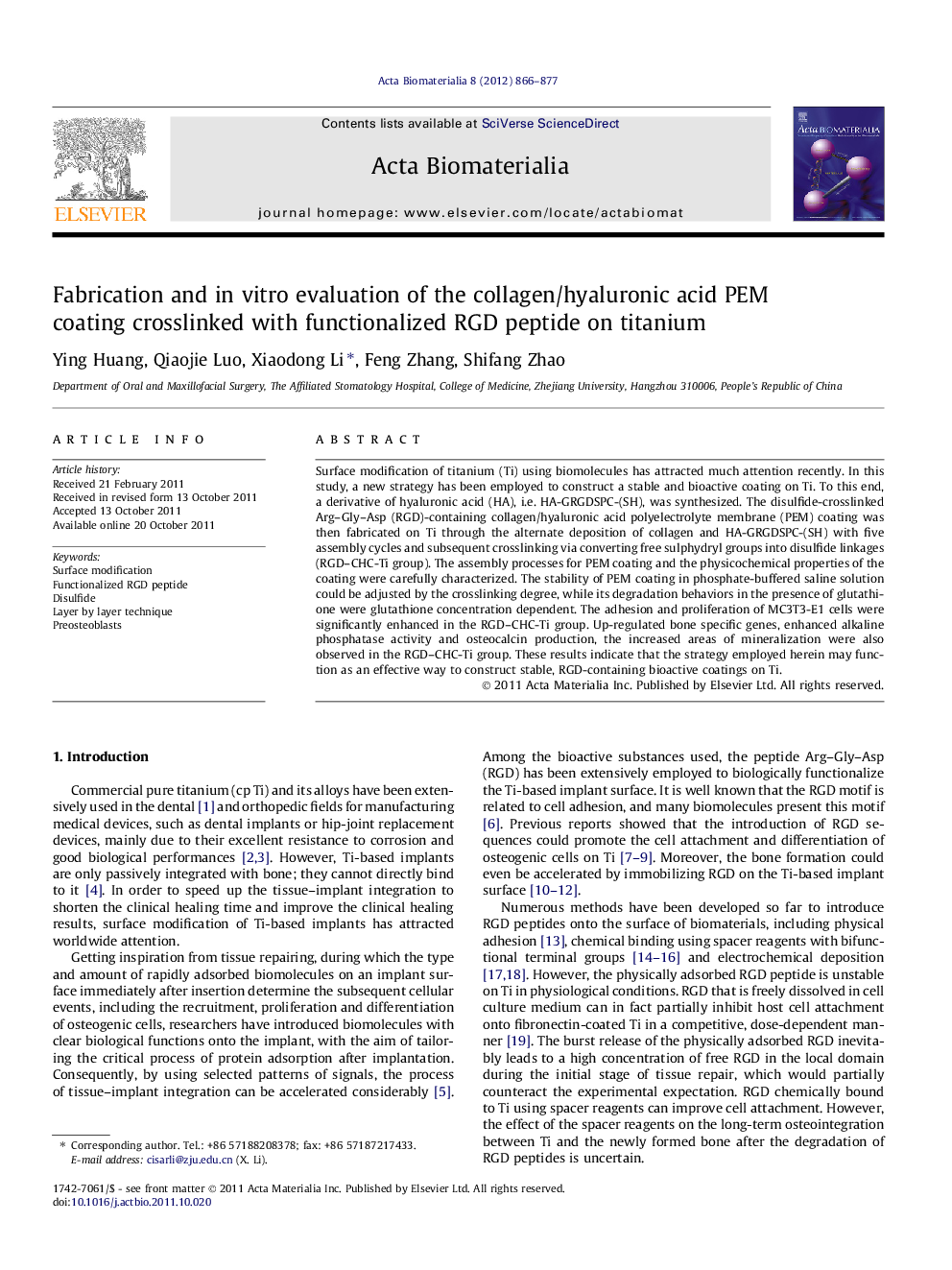| Article ID | Journal | Published Year | Pages | File Type |
|---|---|---|---|---|
| 1490 | Acta Biomaterialia | 2012 | 12 Pages |
Surface modification of titanium (Ti) using biomolecules has attracted much attention recently. In this study, a new strategy has been employed to construct a stable and bioactive coating on Ti. To this end, a derivative of hyaluronic acid (HA), i.e. HA-GRGDSPC-(SH), was synthesized. The disulfide-crosslinked Arg–Gly–Asp (RGD)-containing collagen/hyaluronic acid polyelectrolyte membrane (PEM) coating was then fabricated on Ti through the alternate deposition of collagen and HA-GRGDSPC-(SH) with five assembly cycles and subsequent crosslinking via converting free sulphydryl groups into disulfide linkages (RGD–CHC-Ti group). The assembly processes for PEM coating and the physicochemical properties of the coating were carefully characterized. The stability of PEM coating in phosphate-buffered saline solution could be adjusted by the crosslinking degree, while its degradation behaviors in the presence of glutathione were glutathione concentration dependent. The adhesion and proliferation of MC3T3-E1 cells were significantly enhanced in the RGD–CHC-Ti group. Up-regulated bone specific genes, enhanced alkaline phosphatase activity and osteocalcin production, the increased areas of mineralization were also observed in the RGD–CHC-Ti group. These results indicate that the strategy employed herein may function as an effective way to construct stable, RGD-containing bioactive coatings on Ti.
